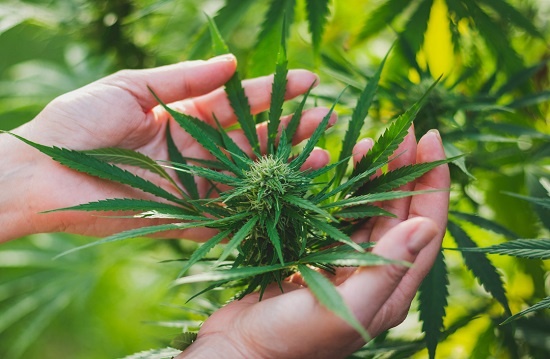If you’re a cannabis connoisseur, you may be a self-proclaimed expert on strains and delivery methods. But how much do you know about the anatomy of a cannabis plant?
After all, there’s a whole world within the plant that lends to your cannabis experience.
And it goes beyond just the bud.
The Anatomy of a Cannabis Plant
If your knowledge of cannabis anatomy is not completely lacking, you probably know that it is the female plant that’s most desirable. They’re responsible for the cannabinoid-rich flowers cannabis enthusiasts covet.
Yet the male plants play an important role too. Sure, they’re much lower in cannabinoid production than the females. And exposure to female plants can cause them to go to seed and ruin a gorgeous grow house crop.
Without their important role in the cultivation and breeding process though, there wouldn’t be any female plants about which to speak. Plus, male plants are used for their fibers. (They’re not really such bad guys.)
So let’s take at what constitutes these magical plants.
Seeds
If you smoke cannabis, you may have had the unsavory experience of encountering seeds. Even so, the seeds produced in female cannabis plants are responsible for carrying the genetics of future male and female plants.
Cotyledon Leaves
These leaves are the first indication that the seeds have germinated and sprouted. They typically pop out of the soil in pairs.
Roots
Once seeds sprout, they send down a taproot to anchor the plant. From there, additional roots branch out into a fibrous sponge-like network which draw nutrients and water to meet the plant’s high water demands.
Some growers will add a beneficial fungus known as mycorrhizal to the soil to benefit the root systems.
Stem, Nodes, and Branches
As a cannabis plant grows, it establishes a main stem that has a vascular system of tubes (known as xylem) that supply the plant with necessary nutrients and water.
On either side of the stem, there are nodes from which branches grow. Nodes will also develop on branches from which smaller branches grow.
Internodal spacing (the space between nodes) is a good indicator of how tall the plant will grow.
Fan Leaves
The fan leaf is probably the most identifiable part of the plant. It’s the unofficial icon for cannabis that you see on t-shirts, bumper stickers, and peppered throughout every Grateful Dead concert and Hash Bash celebration.
This distinct leaf is so recognizable that some believe this is where the highest concentrations of THC exist. That’s not the case. There are only very low levels of THC in fan leaves. Just as on other plants, they serve absorb sunlight and turn it to energy.
They also provide shade for the buds.
Sugar Leaves
Though not as iconic, sugar leaves are very important. These are the small leaves around which the buds form and they are coated in resin. During harvest, they’re often saved as trim for extracts, pre-rolls, or other products.
Pre-Sex Structures/Bracts
The pre-flowers, or beginnings of male and female sex organs, also appear at the aforementioned nodes. They’re modified leaf structures called bracts where potential pollen sacs or future buds are housed.
When a bract shows white hairs on its surface, the plant is female. A bract with no white hairs that become thick and bulbous indicates a male plant. These “crab claw” bracts will produce pollen sacs.
Flowers
The flowers, or buds, are the belles of the ball and are only on the female plant. These are the cannabinoid and terpene powerhouses that once dried, offer so many benefits.
When a cluster of buds grow together at a bud site, it’s called a cola. Smaller colas tend to form on lower branches while the main cola is at the top of the plant.
The flower is broken down into three important structures:
1. Pistils
The pistils are supported by the sugar leaves and contain the reproductive parts of a flower. Vibrant thin strands coming off of the pistil are called stigmas and they collect pollen from males.
Despite the rumors, these hairs do not impact THC production. So while a bud that is heavy in stigmas may look amazing, it isn’t going to have higher THC content.
2. Calyxes
The teardrop folds that constitute the majority of the bud are known as calyxes. These grow among the small sugar leaves, but incubate the seeds once a female plant in fertilized.
In an unfertilized female, calyxes serve to manufacture trichomes. Which brings us to our final part…
3.Trichomes
There are tiny microscopic mushroom-looking protuberances coming off the bud of the cannabis plant. These are trichomes and they’re essentially small spheres of resin that coat the leaves, stems, and calyxes.
The plants originally developed these as a form of protection. Trichomes ooze aromatic oils called terpenes that deter natural predators. They also secrete cannabinoids such as THC and CBD.
Trichomes vary in size. The largest are the capitate-stalked trichomes which are found mostly on the calyxes and sugar leaves that surround them. They contain the highest concentration of terpenes and cannabinoids. They start off clear, but turn white or cloudy as they develop.
Expect Only the Best From Your Cannabis
When you source your cannabis from professional growers with a deep understanding of the anatomy of a cannabis plant and a strong passion for growing it, you’ll get the best product available.
Click here to locate cannabis retailers selling high quality cannabis grown in our state-of-the-art facility. Once you experience the difference that comes from an abiding love for the plant, you’ll never go back.

